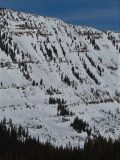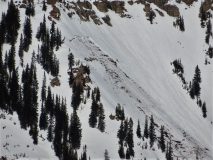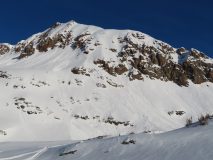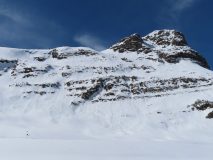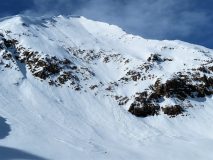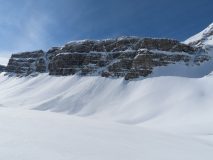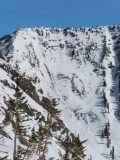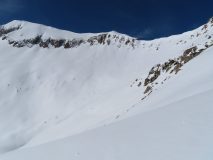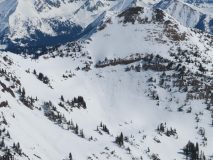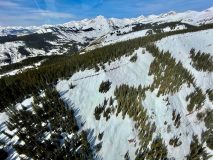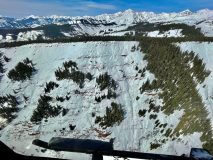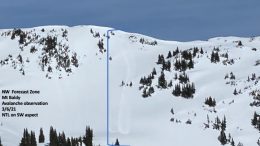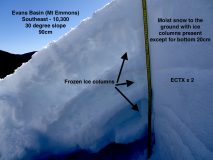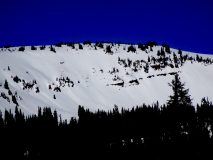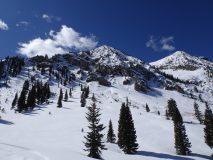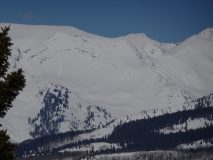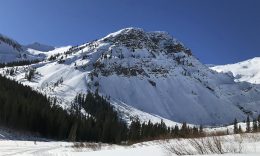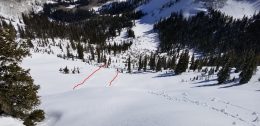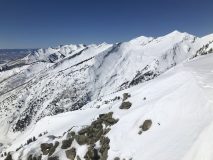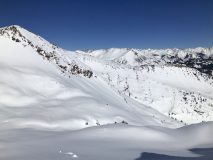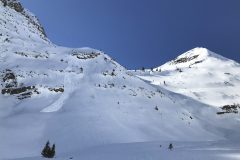Another hot one
Date of Observation: 03/07/2021
Name: Zach Guy
Zone: Northwest Mountains
Location: Ruby Range: Upper OBJ Basin
Aspect: North East, East, South East
Elevation: 10,500 – 12,800′
Avalanches: Widespread wet avalanches from the past few days on E, S, and W aspects; mostly D1 to D1.5 in size a couple D2s. Most of these were either wet loose involving the recent snow or thin soft slabs (6 to 8″ thick) triggered as the recent snow got moist or wet. One was a large wet slab that failed at the ground several feet thick on a south aspect NTL of Schuylkill Ridge. We only saw one wet loose run today (hard to keep track though), but it was easy to trigger small wet sluffs on test slopes.
There were several dry storm slabs that ran last Thursday on northerly aspects.
There was also some impressive persistent slab activity from February that we haven’t gotten views of yet, including several D2.5’s to the ground on south/southwesterly aspects of Schuylkill Ridge, and debris piles pushing D3.5 or larger off of the NE and SE sides of Afley, and perhaps the NE side of Purple.
Weather: Cancun 2021. Warm, sunny, light winds. Thin clouds midday seemed to slightly diminished solar warming,
Snowpack: HS below treeline is 200 cm, HS on a fairly representative alpine feature 250 cm. About 15 cm (6″) of settled storm snow from Thursday. The upper snowpack was frozen solid this morning and starting thawing around 9 to 10 a.m. on easterly aspects. By 11, it was easy to trigger pinwheels and small sluffs involving the recent snow on SE aspects. No signs of instability on shady slopes
Photos:
- A couple of the larger wet loose avalanches. Skier for scale
- Large wet slab likely ran yesterday
- Zoom in on the wet slab crown
- Numerous thin slab avalanches like this; storm slabs triggered as the snow surface got wet. SE aspect
- Loose wet activity on easterly aspect
- Thin slab off of Afley entraining wet snow
- Dry slab avalanche on northerly aspect, likely ran Thursday.
- Older persistent slab on Schuylkill Ridge with a recent wet loose dribler
- Most of this bowl on Schuylkill flushed to the ground in February. Also note a couple of small wet loose avalanches from the last few days.
- Old persistent slab crown on the East face of Afley, and a small wet loose
- Another older persistent slab on Schuykill with a small wet loose






